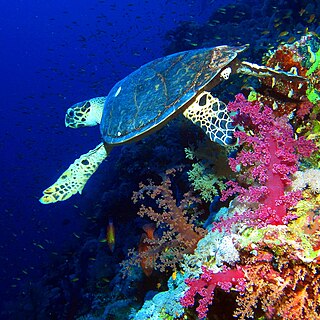
A spongivore is an animal anatomically and physiologically adapted to eating animals of the phylum Porifera, commonly called sea sponges, for the main component of its diet. As a result of their diet, spongivore animals like the hawksbill turtle have developed sharp, narrow bird-like beak that allows them to reach within crevices on the reef to obtain sponges.
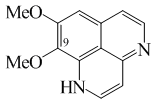
Aaptos aaptos is a species of sea sponge belonging to the family Suberitidae.

Chondrilla nucula, sometimes called the Caribbean Chicken-liver sponge, is a species of sea sponge belonging to the family Chondrillidae.
Tethya actinia is a sea sponge belonging to the family Tethyidae.
Ecionemia is a genus of sea sponges belonging to the family Ancorinidae.
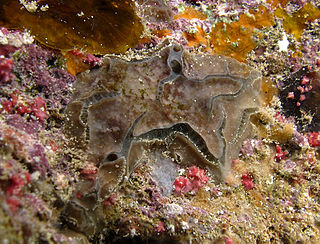
Placospongia is a genus of sea sponges belonging to the family Placospongiidae.

Geodia is a genus of sea sponge belonging to the family Geodiidae. It is the type genus of its taxonomic family.

Polymastia is a genus of sea sponges containing about 30 species. These are small to large encrusting or dome-shaped sponges with a smooth surface having many teat-shaped projections (papillae). In areas of strong wave action, this genus does not grow the teat structures, but instead grows in a corrugated form.

Halichondria is a genus of sea sponges belonging to the family Halichondriidae. These are massive, amorphous sponges with clearly separated inner and outer skeletons consisting of bundles of spicules arranged in a seemingly random pattern.
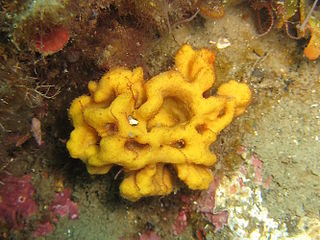
Axinella is a genus of sponges in the family Axinellidae first described in 1862 by Eduard Oscar Schmidt. Species of Axinella occur in the Indian and Pacific Oceans. Most of these sponges are smaller than 20 cm, and have a yellow or orange colour.
Spheciospongia vesparium, commonly known as the loggerhead sponge, is a species of sea sponge belonging to the family Clionaidae. While it is highly toxic to many fish, this sponge is eaten by certain angelfish and is known to form part of the diet of the hawksbill sea turtle.
Stelletta is a genus of sea sponges belonging to the family Ancorinidae.

Clathria is a large genus of demosponges in the family Microcionidae.

Haliclona is a genus of demosponges in the family Chalinidae.
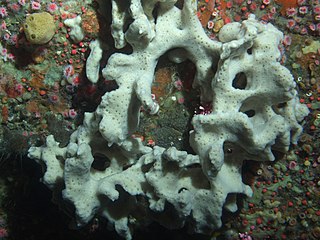
Ircinia is a genus of sea sponges in the family Irciniidae.

Clathria (Clathria) is a subgenus of demosponge in the family Microcionidae.

Tedania is a genus of sea sponges in the family Tedaniidae.

Mycale is a genus of demosponge with 240 recognised species in 11 subgenera. It has been a large genus with multiple subdivisions since it was first described in 1867.
Amorphinopsis is a genus of sea sponges belonging to the family Halichondriidae.
Ciocalypta is a genus of sea sponges belonging to the family Halichondriidae.












